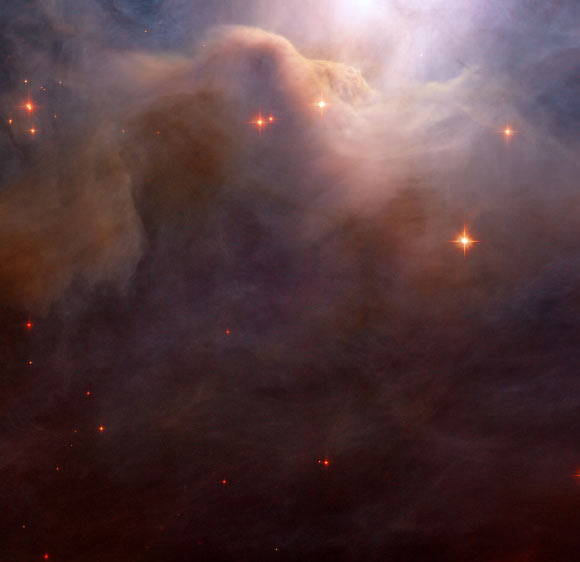The NASA/ESA Hubble Space Telescope has unveiled in stunning detail a part of the bright reflection nebula NGC 7023.

This Hubble image shows a spectacular part of the reflection nebula NGC 7023. The color image was made from separate exposures taken in the visible and near-infrared regions of the spectrum with Hubble’s Near Infrared Camera and Multi-Object Spectrometer. Image credit: NASA / ESA / Hubble.
NGC 7023 is located approximately 1,400 light-years away in the constellation of Cepheus.
Also known as the Iris Nebula, Caldwell 4 and LBN 487, the object is roughly 6 light-years across.
It was discovered on October 18, 1794 by the German-born British astronomer William Herschel.
“While many of the nebulae visible in the night sky are emission nebulae (clouds of dust and gas that are hot enough to emit their own radiation and light), NGC 7023 is a reflection nebula,” Hubble astronomer said.
“This means that its color comes from the scattered light of its central star, designated SAO 19158, which lies nestled in the abundant star fields of the constellation Cepheus.”
NGC 7023 is of particular interest to astronomers because of its colors.
“Reflection nebulae glow because they are made up of extremely tiny particles of solid matter, up to 10 or even 100 times smaller than dust particles on Earth,” the researchers explained.
“These particles diffuse the light around them, giving the nebula a second-hand glow that’s typically bluish.”
“While NGC 7023 appears predominantly blue, it includes large filaments of deep red, indicating the presence of an unknown chemical compound likely based on hydrocarbons,” they added.
“Studying nebulae like this one helps us learn more about the ingredients that combine to make stars.”







